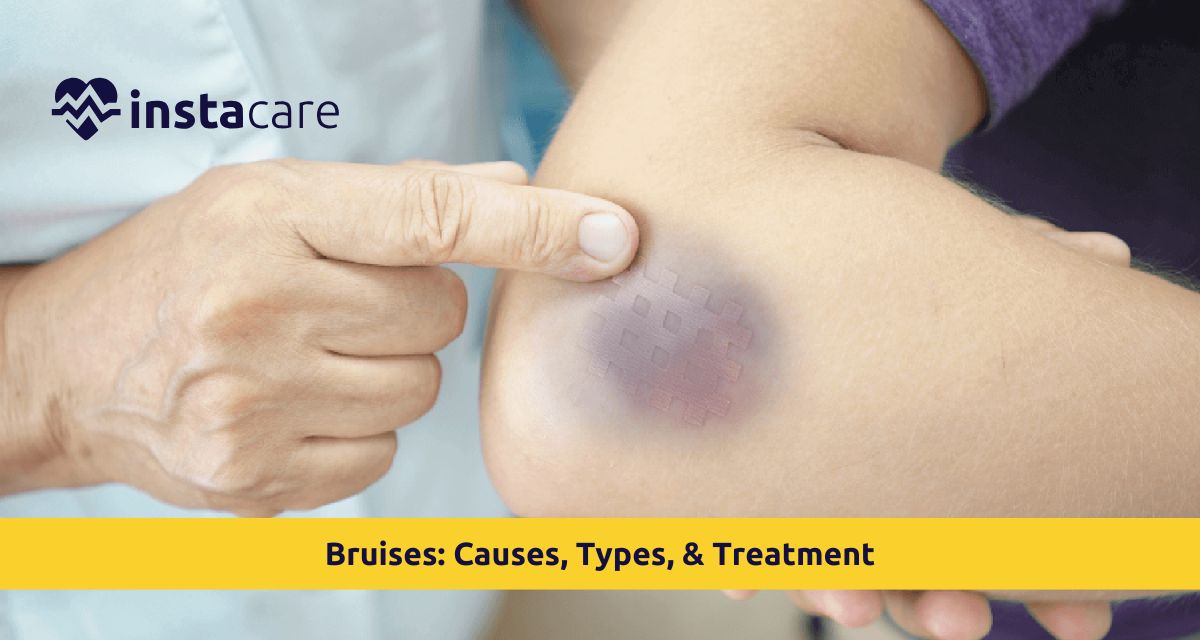Bruises are superficial injuries to the skin caused by bursting of tiny blood vessels beneath the skin, typically as a consequence of impact or trauma. Although they are unsettling, bruises are not typically harmful and will resolve spontaneously. Recurrent or spontaneous bruising, however, may be indicative of underlying pathology that needs to be evaluated. Familiarity with the causes, types, and proper treatment modalities is critical in the management of bruises and when to consult a specialist.
What is a Bruise?
A bruise or contusion is a type of injury when blood leaks from burst capillaries. It is not a skin breakage, and as such, bruises will become discoloration and not an open wound. The effect can be seen in the red and purple discolorations becoming green and yellow since the body will consume the blood.
While most bruises are not severe and will ultimately pass away, others are also serious, especially when they happen inside the organs or deep tissue. Such a thing is mostly known as internal bruising, and unlike superficial ones, it doesn't necessarily need to appear. Bruises have different healing outcomes based on how serious, what age, and how healthy one is.
Various Types of Bruises To Know
Bruises can occur in different presentations based on location, depth, and mechanism of injury. The three most frequent types of bruising are:
Subcutaneous Bruises
They are underneath the skin and are most frequent. Bruises on the legs, arms, and other surface bodies is normally of this nature.
Intramuscular Bruises
These are deeper muscles. These are more frequent as a result of blunt trauma and can be with or without swelling and limitation of movement.
Periosteal Bruises
These are bone-on and are more painful. Because they are closer to the bone surface, there is more pain, and the recovery time for bruising in this group tends to be longer.
Bruising easily can be caused by medical illness and internal trauma in other cases and is harder to diagnose without pictures.
Why Do Bruises Occur?
Bruises are primarily due to trauma, i.e., bumping into something, falling, or impacting something. Bruises without injury may also happen and may be a sign of underlying disease.
Bruising may occur in some individuals because of learning that they are more prone to bruising even after mild trauma. This is due to:
- Age: Bruising is more probable due to weakened blood vessels and thinning of skin.
- Drugs: Aspirin, corticosteroids, anti-inflammatory medication, and blood-thinning medications increase risk of bruising.
- Medical illness: Illnesses that harm the blood vessels or interfere with clotting lead to bruising without cause or too much bruising.
- Vitamin deficiency and bruising: C, K, and B12 Vitamin deficiency and bruises impair clotting, resulting in normal or delayed-to-close bruising.
Chronic painful bruising or irritation is one of them. They can be evidence of internal tissue damage, particularly if they occur on the thighs or abdominal muscles. Bruises that occur on legs are mostly painful since legs are used extensively and pressure is applied to legs muscles.
Some Bruise Discoloration Stages to Know
Bruises usually progress through a range of colors during healing, which is to be expected considering that blood is processed differently by the body:
- Red or purple (Day 1–2): New blood pools in the tissue.
- Blue or dark purple (Day 2–5): The color deepens with the depletion of oxygen.
- Green (Day 5–7): Hemoglobin is degraded.
- Yellow or brown (Day 7–10 ): Final stage before the bruise fades.
These phases help in the analysis of time spent by bruising to heal as well as confirming if the process is going on in the right direction. In case discoloration is more than two weeks or repeated new bruises happen fairly often, then one can assume there is some underlying issue like vitamin deficiency with bruises or clotting disorder.
When to See a Doctor for Bruises?
The majority of bruises are self-limiting. In the situations listed below, however, a medical examination is recommended:
- Severe bruising without a visible cause or spontaneously occurring.
- Traumaless bruising, especially recurring bruising or at an unusual location such as on the back or chest.
- Painful swelling bruising that is indurated or inhibits movement.
- Indications of internal bruising such as deep pain, cramps in the abdomen, or hematuria/hematochezia.
- Bruising associated with fatigue, dizziness, or bleeding gums.
Repeated or inexplicable easy bruising in children, elderly, or on medications should not be ignored. Early diagnosis will correct potential deficiencies or medical diseases.
How to Treat Bruises Properly?
Bruises in most cases heal spontaneously with the passage of time, but with proper treatment, recovery is reduced and relief from pain is obtained. Treatment is based on the location and nature of the bruise.
Immediate Treatment
Right after trauma, a cold compress decreases blood flow to the bruised region, with the effect of decreased swelling and color change. Elevating the injured extremity will also reduce pooling of blood and inflammation.
48 Hours Later
Warm compresses will restore circulation to a sluggish area and enable the body to drain off pooling blood. Gentle massage over (not on) the actual bruise also aids healing.
Over-the-counter pain drugs will manage painful bruises, but do not administer aspirin if not prescribed as it will widen the bruising. Compression bandages will manage swelling bruises on legs when prescribed by a physician.
Nutritional Support
Nutrition plays a role in determining the quality of body recovery from injury. Vitamin deficiency has direct association with bruising. Encourage adequate ingestion of:
- Vitamin C to strengthen blood vessels
- Vitamin K to ensure proper clotting
- Vitamin B12 for general blood health
- Elimination of deficiencies will cure bruising better and heal quicker.
Medical Therapies
If bruising is caused by disease or medication, the situation can be altered by a doctor. If bruising happens internally, imaging studies will be required in an effort to find the severity of trauma. When bleeding happens in internal organs or there is excess pressure, surgery might be required in severe situations. Excessive bruising without trauma or recurrent bruising in anticoagulant-treated patients can be observed carefully. Medication can be changed keeping in mind the reduction of risk.
Conclusion
Bruises are a common finding, typically benign, and a benign response to minor trauma. In simple bruising syndromes, prolonged Healing time for bruises, or spontaneous bruising, never ignore. They can define underlying illness like bruising or blood coagulability disorders, and vitamin deficiency. Detection of signs of internal bruising, consciousness about dealing with painful bruises, and consciousness about issues like bruising of legs can avoid conditions to go out of sight.
Small changes in daily routines, a good diet, and mild exercises can do magic in the prevention and cure of bruises. But uncertain, a visit to the doctor is comforting and effective treatment.
Please book an appointment with the
best Dermatologist in Lahore, Karachi, Islamabad, and all major cities of Pakistan through
InstaCare, or call our helpline at 03171777509 to find the verified doctor for your disease.

